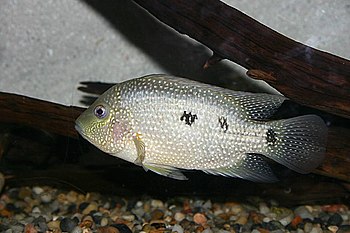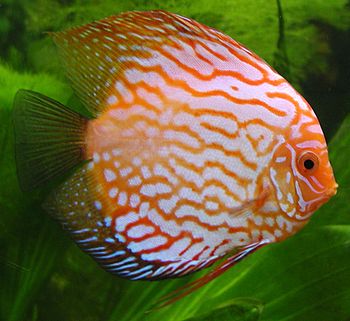Does a Siamese Fighting Fish need a filter? The answer is yes and no. A Siamese Fighting Fish is a labyrinth fish, meaning that it is capable of removing oxygen from the air as humans do. So unlike most fish, a Siamese Fighting Fish does not need a filter to oxygenate the water in their tank. However, like most fish, a Siamese Fighting Fish has little tolerance for ammonia.
 |
| "Memnon" a cambodian coloured male Betta (Photo credit: Wikipedia) |
If you are not prepared or have the time to set water and do waters changes every couple of days, then you may need to look at putting a filter in with your Fighter. With a good established biological filter in your fighter tank, water changes may be cut by more than half. Note established biological. This is not something that happens overnight or as soon as you turn your filter on. A good filter will work three ways in your tank, mechanical, chemical and biological.
Once you have set your filter up in your tank and turned it on the mechanical, which pulls debris into the filter starts working as well as the chemical aspect, removing certain, not all chemical and metals from the water. However it is the biological aspect that confuses most people.
Biological refers to the good bacteria necessary to break down fish waste, leftover food and other decaying matter. And there is only one way to get instant bacteria in a new filter, and that is by putting either sponges, bio-balls or filter wool from a filter that is already established into the new filter.
A simply water test will tell you if the filter is established or not. If the ammonia and nitrite readings are zero and there is a nitrate reading then the filter is established and some of it's filter media may be used to seed the new filter. However if there is any reading in either or both the ammonia and nitrite tests, then the filter is not fully established and not ready to seed a new filter. If asked some Local Pet Shops will sell you some of their filter media to seed your new filter if you do not have an established filter at home.
 |
| Get this E-Book |
You can establish biological in your filter from scratch, which can take between six weeks to six months depending on the method you use. But using your Siamese Fighting Fish is not a good idea at all. There is a good chance that your Fighter will not survive the cycling process, even with the help of live bacteria cultures that are available on the market today. While this information may sound daunting, time consuming or simply too difficult, ask yourself which do you prefer, water changes every couple of days or water changes when then nitrate reading is 20 (which depending on the size of your tank, filter and how you feed may be once a fortnight or month)?
Your Siamese Fighting Fish will be happier and his immune system better with an established filter in his tank, providing him with cleaner water for longer. Just watch that the current produced by the filter is not too fast for his long flowing fins. If your Siamese Fighting Fish suddenly goes into hiding, then you will need to slow the water flow down. This can be achieved by either controlling the output of the filter or using a spray bar to diffuse the water over a larger area.
The last important thing to remember with filters is that when you rinse them out when you do a water change, DO NOT USE WATER FROM THE TAP. Councils adds chlorine to our water to kill bacteria and this is what will happen to the good bacteria that you need in your filter. Rinse your filter out in water from your tank and by doing so save the bacteria that you need.
Cutting down time spent on water changes means more time spent enjoying your Siamese Fighting Fish.
Article Source: EzineArticles |








